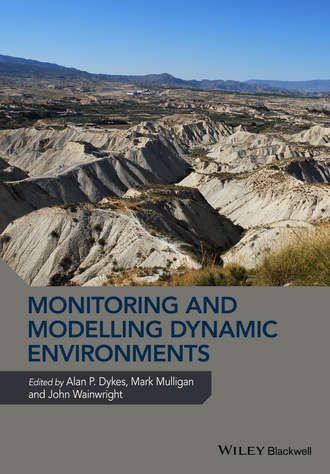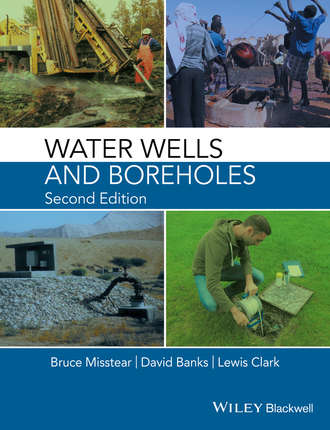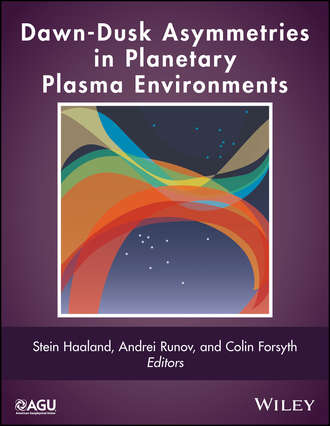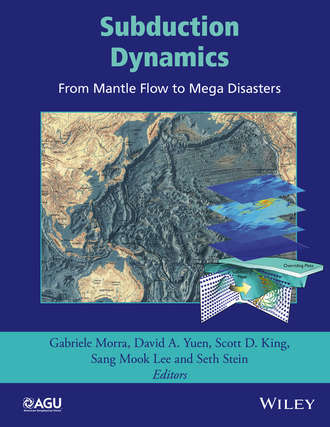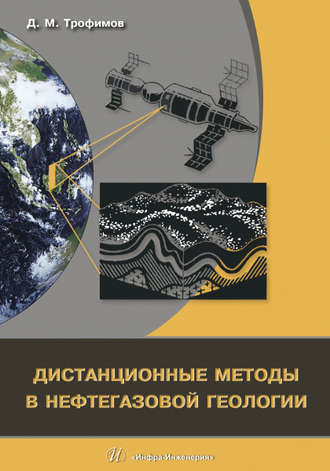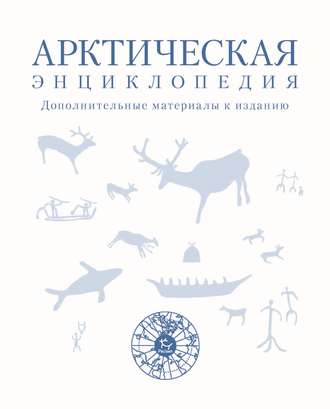геология
Deep Earth
Группа авторов
Deep Earth: Physics and Chemistry of the Lower Mantle and Core highlights recent advances and the latest views of the deep Earth from theoretical, experimental, and observational approaches and offers insight into future research directions on...
Terrestrial Water Cycle and Climate Change
Группа авторов
The Terrestrial Water Cycle: Natural and Human-Induced Changes is a comprehensive volume that investigates the changes in the terrestrial water cycle and the natural and anthropogenic factors that cause these changes. This volume brings together...
Hydrodynamics of Time-Periodic Groundwater Flow
Joe S. Depner
Hydrodynamics of Time-Periodic Groundwater Flow introduces the emerging topic of periodic fluctuations in groundwater. While classical hydrology has often focused on steady flow conditions, many systems display periodic behavior due to tidal,...
Active Global Seismology
Группа авторов
Neotectonics involves the study of the motions and deformations of the Earth's crust that are current or recent in geologic time. The Mediterranean region is one of the most important regions for neotectonics and related natural hazards. This...
Management of the Effects of Coastal Storms
Philippe Quevauviller
A large part of the world’s coastlines consists of sandy beaches and dunes that may undergo dramatic changes during storms. Extreme storm events in some cases dominate the erosion history of the coastline and may have dramatic impacts on densely...
Monitoring and Modelling Dynamic Environments
Группа авторов
The Times (Obituaries, 4 August 2008) reported that “John Thornes was one of the most eminent and influential physical geographers of his generation.” John’s keen interest in understanding landform processes and evolution was furthered through a...
Water Wells and Boreholes
David Banks
Water Wells and Boreholes focuses on wells that are used for drinking, industry, agriculture or other supply purposes. Other types of wells and boreholes are also covered, including boreholes for monitoring groundwater level and groundwater...
Multiple-point Geostatistics
Professor Gregoire Mariethoz
This book provides a comprehensive introduction to multiple-point geostatistics, where spatial continuity is described using training images. Multiple-point geostatistics aims at bridging the gap between physical modelling/realism and...
Atlas of Natural and Induced Fractures in Core
John C. Lorenz
An invaluable reference that helps geologists recognize and differentiate the many types of natural fractures, induced fractures and artefacts found in cores Atlas of Natural and Induced Fractures in Core offers a reference for the...
Plate Boundaries and Natural Hazards
Группа авторов
The beginning of the new millennium has been particularly devastating in terms of natural disasters associated with tectonic plate boundaries, such as earthquakes in Sumatra, Chile, Japan, Tahiti, and Nepal; the Indian Ocean and the Pacific...
Handbook of Sea-Level Research
Группа авторов
Measuring sea-level change – be that rise or fall – is one of the most pressing scientific goals of our time and requires robust scientific approaches and techniques. This Handbook aims to provide a practical guide to readers interested in this...
Dawn-Dusk Asymmetries in Planetary Plasma Environments
Группа авторов
DawnDusk Asymmetries in Planetary Plasma Environments Dawn-dusk asymmetries are ubiquitous features of the plasma environment of many of the planets in our solar system. They occur when a particular process or feature is more pronounced at one...
Flood Damage Survey and Assessment
Группа авторов
Several scholars across the globe identified the present lack of high quality damage data as the main constraint to efficient risk mitigation. The need for a systematic collection of damage data in the aftermath of flood events come into light,...
Fault Zone Dynamic Processes
Группа авторов
Why do earthquakes happen? What properties control the dynamic rupture and what are the processes at play? Chapters in the present volume capture the current state of the art by displaying an overview of the existing knowledge on the physics of...
Natural Hazard Uncertainty Assessment
Группа авторов
Uncertainties are pervasive in natural hazards, and it is crucial to develop robust and meaningful approaches to characterize and communicate uncertainties to inform modeling efforts. In this monograph we provide a broad, cross-disciplinary...
Multiphase Lattice Boltzmann Methods
Haibo Huang
Theory and Application of Multiphase Lattice Boltzmann Methods presents a comprehensive review of all popular multiphase Lattice Boltzmann Methods developed thus far and is aimed at researchers and practitioners within relevant Earth Science...
Water-Energy-Food Nexus
Группа авторов
Water, energy and food are key resources to sustain life, and are the fundamental to national, regional and global economies. These three resources are interlinked in multiple ways, and the term “nexus” captures the interconnections. The nexus...
River Science
Группа авторов
River Science is a rapidly developing interdisciplinary field at the interface of the natural sciences, engineering and socio-political sciences. It recognises that the sustainable management of contemporary rivers will increasingly require new...
Climate in Context
Группа авторов
Society is increasingly affected by climate impacts, from prolonged water shortages to damaging coastal floods and wildfires. Scientists studying climate variations are eager to have their knowledge used in adaptive decision making. To achieve...
Dendroclimatic Studies
Rob Wilson
A top priority in climate research is obtaining broad-extent and long-term data to support analyses of historical patterns and trends, and for model development and evaluation. Along with directly measured climate data from the present and...
The Ice Age
Professor J?rgen Ehlers
This book provides a new look at the climatic history of the last 2.6 million years during the ice age, a time of extreme climatic fluctuations that have not yet ended. This period also coincides with important phases of human development from...
Climate Extremes
Группа авторов
Although we are seeing more weather and climate extremes, individual extreme events are very diverse and generalization of trends is difficult. For example, mid-latitude and subtropical climate extremes such as heat waves, hurricanes and...
Submerged Landscapes of the European Continental Shelf
Группа авторов
Quaternary Paleoenvironments examines the drowned landscapes exposed as extensive and attractive territory for prehistoric human settlement during the Ice Ages of the Pleistocene, when sea levels dropped to 120m-135m below their current levels....
Magnetosphere-Ionosphere Coupling in the Solar System
Группа авторов
Over a half century of exploration of the Earth’s space environment, it has become evident that the interaction between the ionosphere and the magnetosphere plays a dominant role in the evolution and dynamics of magnetospheric plasmas and...
Microstructural Geochronology
Группа авторов
Microstructural Geochronology Geochronology techniques enable the study of geological evolution and environmental change over time. This volume integrates two aspects of geochronology: one based on classical methods of orientation and spatial...
Subduction Dynamics
Группа авторов
Subduction dynamics has been actively studied through seismology, mineral physics, and laboratory and numerical experiments. Understanding the dynamics of the subducting slab is critical to a better understanding of the primary societally...
Моделирование процесса сгущения красного шлама
А. Фирсов
Описаны результаты экспериментальных исследований производственных образцов красного шлама и получены параметры, необходимые при моделировании процесса осаждения. Рассмотрено поведение флокулированной суспензии в сгустителе-осветлителе с...
Методы выделения однородных участков месторождения при многомерной геометризации и геостатистическом анализе размещения показателей
В. В. Руденко
Проведен анализ многомерных статистических методов выделения однородных участков месторождений, применяющихся в практике их геометризации. Рассмотрены особенности районирования залежи полезного ископаемого на однородные районы на основе...
Методология горно-геометрической оценки риска недропользования
Д. Н. Шурыгин
Описаны подходы к решению задачи оценки риска недропользования и горного производства в условиях неполной информации о природном размещении геологических показателей в недрах. Установлены количественные взаимосвязи погрешности геометризации...
Основы общей инженерной геологии
Г. И. Трофимова
В учебном пособии рассмотрены вопросы общей геологии, гидрогеологии, грунтоведения и инженерной геодинамики. Приведены классификация и характеристики минералов и горных пород, методики их определения и оценки. Дана оценка гидрогеологических...
Дистанционные методы в нефтегазовой геологии
Д. М. Трофимов
Монография посвящена популяризации редко используемых в России инновационных методов дистанционного зондирования среди специалистов нефтегазовой отрасли и содействию их внедрения в практику поисково-разведочных работ на нефть и газ. В ней...
Вышкомонтажник. Учебное пособие
Борис Покрепин
В книге изложены основные сведения об устройстве буровых установок и их оборудования, рассмотрены вопросы транспортировки бурового оборудования, подготовительные операции к монтажу буровой установки, оснащение инструментом вышкомонтажных бригад....
Арктическая энциклопедия. Дополнительные материалы к изданию
Коллектив авторов
Дополнительные материалы к изданию «Арктическая энциклопедия» в 2-х томах – дополненное и переработанное издание «Северной энциклопедии». «Арктическая энциклопедия» – универсальный свод информации, посвященный Арктике, Северу России и соседям...
Геотектоника и геодинамика: основы магнитотектоники. Учебное пособие для вузов
Дмитрий Васильевич Метелкин
Настоящее учебное пособие раскрывает теоретические основы и методические приемы магнитотектоники одного из крупных разделов современной палеомагнитологии. В главах книги изложены основные положения и возможности палеомагнитного анализа для...
Энергетические и временны́е характеристики предельного состояния горных пород
Ю. В. Петров
Первое издание вышло в 2018 г. при финансовой поддержке РФФИ. В монографии рассмотрены критерии прочности горных пород, испытывающих действие статического и динамического нагружения, в том числе с учетом различных видов объемных напряженных...
Психоз планеты Земля
Борис Островский
Существуют ли НЛО? В чем причина Чернобыльской трагедии, гибели подводной лодки «Курск»? Почему был сбит в небе над Сахалином корейский авиалайнер (рейс KAL-007)? В чем причина катастрофы российского SuperJet-100 в Индонезии? Что объединяет эти...
Radar Meteorology
Robert M. Rauber
A comprehensive introduction to the current technology and application of radar in meteorology and atmospheric sciences Written by leading experts in the field, Radar Meteorology, A first Course offers an introduction to meteorological radar...
Environmental Applications of Digital Terrain Modeling
John P. Wilson
A digital elevation model (DEM) is a digital representation of ground surface topography or terrain. It is also widely known as a digital terrain model (DTM). A DEM can be represented as a raster (a grid of squares) or as a vector based...
Periglacial Geomorphology
Colin K. Ballantyne
A FASCINATING AND INFORMATIVE EXPLORATION OF PERIGLACIAL PROCESSES, PAST AND PRESENT, AND THEIR ROLE IN LANDSCAPE EVOLUTION Periglacial Geomorphology presents a comprehensive introduction to the processes that operate in present periglacial...
Smart Water Technologies and Techniques
David A. Lloyd Owen
An Insightful Examination of Smart Water Systems and Technology Inland water supplies are under increasing pressure. Climate, social, and demographic change have begun tipping the balance toward demand management, as supplies begins to dwindle....
Основы техники, технологии и безопасности буровых работ
В. В. Нескоромных
Представлены сведения о буровой технике, технологиях и правилах безопасного ведения буровых работ. Приведена информация как об отечественной буровой технике и технологиях бурения скважин, так и о зарубежных буровых установках, инструменте,...
Геометрическая сейсмика 1. Лучевой метод
А. А. Дучков
Излагается введение в теорию лучевого метода, который используется для описания распространения сейсмических волн. Рассматривается теория характеристик для гиперболических уравнений в частных производных. Выводится уравнение эйконала, система...
Минеральные ресурсы строительного сырья Новосибирской области
В. В. Ларичкин
В учебном пособии содержатся данные о характере и запасах минерального сырья Новосибирской области для производства строительных материалов, охарактеризованы ресурсный потенциал области для обеспечения производственной базы стройматериалов, а...
Обработка и интерпретация результатов геофизических исследований и неразрушающего контроля
В. В. Набатов
Учебник посвящен одной из наиболее важных и динамично развивающихся областей геофизики и неразрушающего контроля. Представлен материал по таким вопросам, как распознавание образов, искусственный интеллект, фильтрация сигналов, использование...
Static Conceptual Fracture Modeling
Ronald A. Nelson
Modelling of flow in naturally fractured reservoirs is quickly becoming mandatory in all phases of oil and gas exploration and production. Creation of a Static Conceptual Fracture Model (SCFM) is needed as input to create flow simulations for...
From Deep Sea to Laboratory 3
Jean-Numa Foulc
The scientific expedition of H. M. S. Challenger in the 1870s marks the starting point of physical oceanography. This ship traveled the seas of the globe pursuing a dual objective: to conduct an in-depth study of animal life and to observe the...
Что есть геология?
Аспер Ти
Данная работа ориентирована на широкий круг читателей, в большей степени – на школьников (их родителей) и людей, интересующихся геологией. Надеюсь Вам, дорогой читатель, геология поможет выбрать интересующее направление в науке или поможет...





